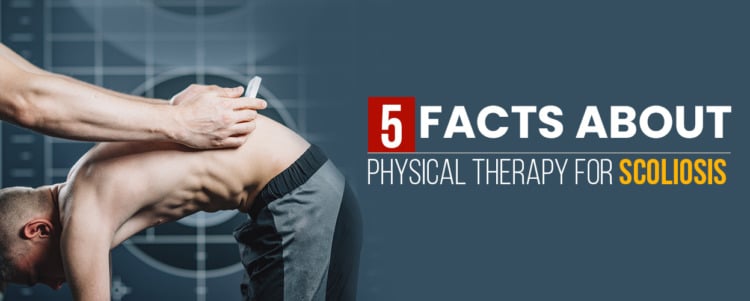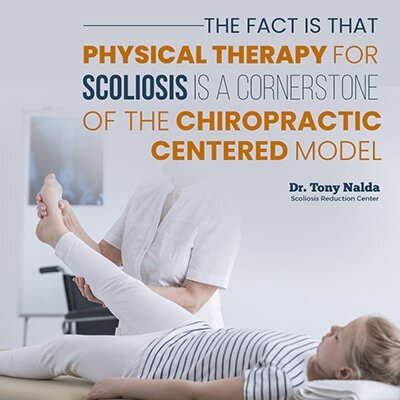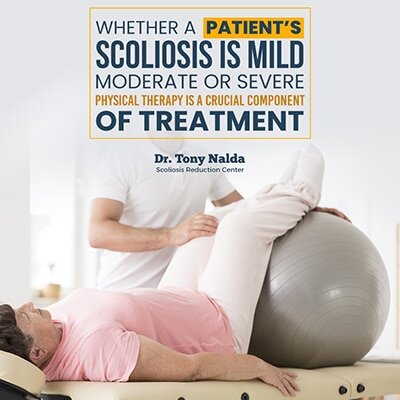
I believe a proactive approach to scoliosis gives patients the best chance at stopping the progression of their spinal curvatures. The traditional treatment approach emphasizes observation and inaction. But this only serves to allow scoliosis to continue its progression until the point when surgery is recommended as the only viable option.
Being proactive about scoliosis means considering alternative treatments. The chiropractic-centered model puts patients back in the driver’s seat of their own health and recovery. But it requires time, effort and commitment. Not only does this approach entail scoliosis-specific chiropractic adjustments, but it also includes exercise, bracing and physical therapy.

I would like to spend some time focusing on physical therapy for scoliosis. I have found that some misconceptions exist regarding the usefulness of therapy when it comes to treating scoliosis, and I field numerous questions regarding its effectiveness. The fact is that physical therapy for scoliosis is a cornerstone of the chiropractic-centered model. Without it, treatment would not be nearly as effective. But when patients receive support specifically designed for them — and they are willing to put forth a courageous effort — it is one of the keys to halting and even reducing abnormal spinal curvatures.
Let’s take a look at some of the facts about physical therapy for scoliosis.
Table of Contents
When you think about the typical physical therapy program, activities like sit-ups, pelvic tilts and resistance-band training come to mind. Normal physical therapy generally includes manual therapies like stretching, massage and strength training, all designed to remove restrictions on movement and increase mobility. Of course, each patient’s physical therapy regimen is determined by the type and severity of condition they are working to overcome. Therefore, the exercises recommended to those recovering from a sports-related knee surgery, for example, are different from those that would be prescribed to someone who hurt their neck or back in a car accident.
When it comes to scoliosis, recommended physical-therapy programs cater to each specific patient. And they differ from what you might expect from a typical physical therapy program. This is why generic physical-therapy practices are not effective for scoliosis. In order for therapy to have a positive impact on the scoliosis patient, it must be administered by professionals who understand scoliosis-specific exercises and therapeutic techniques. Otherwise, patients could experience more harm than good.
In order for physical therapy to be most effective in the treatment of scoliosis, it needs to be approached with greater intensity and a shorter duration. A slow, gradual path through therapy may be helpful for other types of conditions or injuries. But because scoliosis is a complex condition that progresses over time, therapy benefits considerably by ramping up the intensity.
By condensing the time frame and increasing the intensity of therapy, it is possible to overcome the progressive nature of the condition. This may sound intimidating, especially for anyone who has experienced a demanding physical-therapy program in the past. However, it is not painful, and we do not push patients beyond their individual abilities to handle treatment. We simply provide more therapy over a shorter period of time so the condition can respond most favorably.

Whether a patient’s scoliosis is mild, moderate or severe, physical therapy is a crucial component of treatment. Naturally, the type of therapy prescribed for someone with mild scoliosis would be different from that prescribed to someone with a more severe form of the condition. Nevertheless, physical therapy for scoliosis is one of the critical pillars of a comprehensive treatment plan.
From infants to fully mature adults with scoliosis, physical therapy should be considered as a vital form of treatment. The type and intensity of therapy differs from patient to patient, and we take each person’s age into account when developing a treatment plan. However, there is no age at which some type of physical therapy is inappropriate for treating scoliosis.
By itself, physical therapy for scoliosis is marginally effective. But when it is combined with scoliosis-specific chiropractic, exercise and custom bracing, it can provide patients with increased strength, mobility and function. All these different modalities of treatment work together to give patients the best possible chance of halting the progression of their spinal curvatures.
The most common treatments for scoliosis require patients to take a passive approach. Watching and waiting, bracing and surgery are all recognized as part of the standard, traditional approach to care. But I believe the best results are only possible when patients are proactive. That means seeking out alternative treatments like those offered here at the Scoliosis Reduction Center. Physical therapy may seem challenging, or even counterproductive, if you are accustomed to the traditional model of treatment. But it is, in fact, a critical element of addressing the condition.
